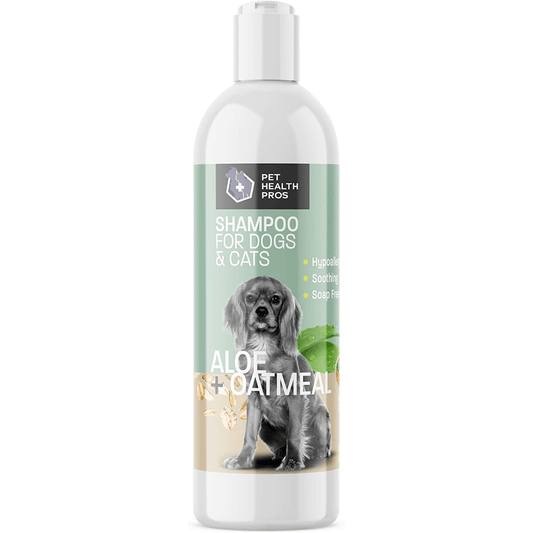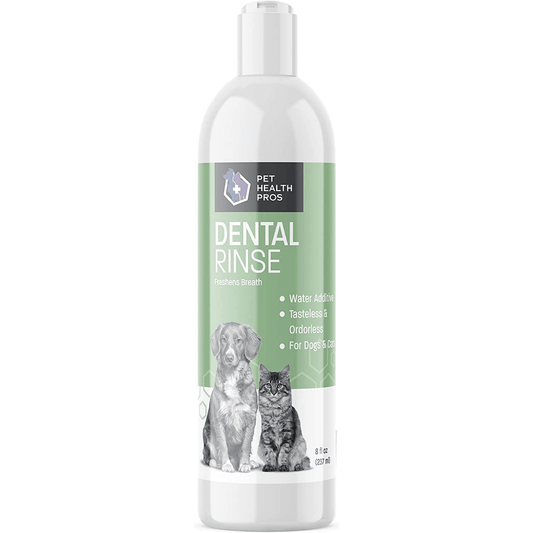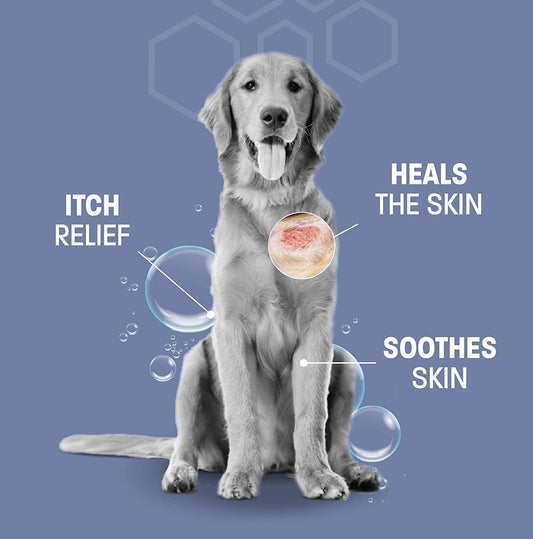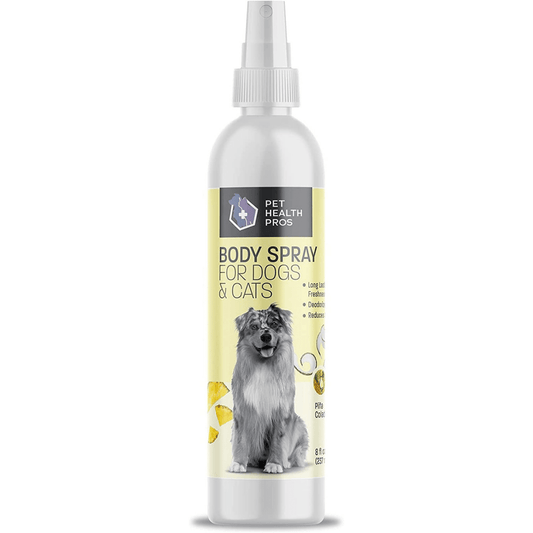Ear infections are a common problem in dogs and can cause discomfort and pain. One effective way to treat these infections is by using dog ear drops. However, with so many options available, it can be challenging to choose the right one. In this article, we will discuss the causes, symptoms, and diagnosis of ear infections in dogs. We will also provide tips for selecting the right dog ear drops and administering them safely. Lastly, we will share some preventive measures to help keep your dog's ears healthy and infection-free.
Key Takeaways
- Ear infections are a common problem in dogs and can cause discomfort and pain.
- Choosing the right dog ear drops is crucial for effective treatment.
- Look for ingredients like antifungal and antibacterial agents in dog ear drops.
- Consider your dog's allergies when selecting ear drops.
- Proper administration of ear drops is essential for successful treatment.
Understanding Ear Infections in Dogs
Causes of Ear Infections in Dogs
Ear infections in dogs can be caused by a variety of factors. One common cause is the presence of bacteria or yeast in the ear. Once the ear becomes moist or inflamed, it's easy for bacteria or yeast to overgrow and cause infection in a pup. Other causes of ear infections include allergies, foreign objects in the ear, and hormonal imbalances. It's important to identify the underlying cause of the infection in order to effectively treat it.
Symptoms of Ear Infections in Dogs
Ear infections in dogs can cause a range of symptoms that may indicate an underlying problem. Some common symptoms of ear infections in dogs include scratching, head shaking, ear discharge, and redness or swelling in and around the ears. If you notice any of these symptoms in your dog, it is important to consult with your veterinarian for a proper diagnosis and treatment plan.
Diagnosing Ear Infections in Dogs
Diagnosing ear infections in dogs can be challenging as the symptoms can vary depending on the severity of the infection. However, there are several key signs that can indicate an ear infection in dogs. These include excessive scratching or rubbing of the ears, head shaking, redness or swelling of the ear canal, foul odor, and discharge. If you notice any of these symptoms, it is important to take your dog to the veterinarian for a proper diagnosis.
Choosing the Right Dog Ear Drops
Types of Dog Ear Drops
When it comes to treating ear infections in dogs, there are several types of dog ear drops available in the market. These ear drops are specifically formulated to target the underlying causes of ear infections and provide relief to your furry friend. Antibiotic ear drops are commonly used to treat bacterial infections, while antifungal ear drops are effective against fungal infections. Additionally, there are ear drops with corticosteroids that help reduce inflammation and itching. It is important to consult with your veterinarian to determine the most suitable type of ear drops for your dog's specific condition.
Ingredients to Look for in Dog Ear Drops
When choosing dog ear drops, it's important to look for specific ingredients that can effectively treat ear infections. Antiseptic ingredients are crucial as they help kill bacteria and prevent further infection. Some common antiseptic ingredients to look for include benzalkonium chloride and chlorhexidine. These ingredients have antimicrobial properties and can help reduce inflammation and itching. Additionally, antifungal ingredients such as miconazole or ketoconazole can be effective in treating fungal ear infections. It's also beneficial to choose dog ear drops that contain ceruminolytic agents, which help break down and remove excessive earwax. These agents can include salicylic acid or propylene glycol.
Considerations for Allergy-Prone Dogs
When choosing dog ear drops for allergy-prone dogs, it is important to consider their specific needs. Allergies can cause inflammation and irritation in the ears, making them more susceptible to infections. Here are some factors to keep in mind:
- Hypoallergenic Formulas: Look for dog ear drops that are specifically formulated for dogs with allergies. These formulas are often free from common allergens such as wheat, corn, and soy.
- Gentle Ingredients: Opt for ear drops that contain gentle ingredients to minimize the risk of further irritation. Natural ingredients like aloe vera and chamomile can help soothe the ears.
- Avoid Harsh Chemicals: Harsh chemicals can aggravate allergies and cause discomfort. Make sure to choose dog ear drops that are free from alcohol, fragrances, and artificial additives.
By considering these factors, you can find the right dog ear drops that are safe and effective for allergy-prone dogs.
Administering Dog Ear Drops Safely
Preparing Your Dog for Ear Drops
Before applying ear drops to your dog, it's important to make sure they are calm and comfortable. Find a quiet and calm area where you can administer the drops without distractions. Gently hold your dog's head and reassure them with a soothing voice. If your dog is anxious or resistant, you may need to enlist the help of another person to hold them still.
To prepare your dog's ear for the drops, gently clean the outer ear with a soft cloth or cotton ball. Avoid using cotton swabs as they can push debris further into the ear canal. Make sure to remove any visible dirt or wax from the ear.
Once the ear is clean, carefully hold the ear flap and gently lift it to expose the ear canal. Be cautious not to insert the dropper too far into the ear, as this can cause discomfort. Squeeze the recommended number of drops into the ear canal, following the instructions on the product label. After administering the drops, gently massage the base of the ear to help distribute the medication.
If your dog shakes their head after the drops are applied, it's normal and helps to spread the medication throughout the ear. However, be prepared for some of the medication to come out of the ear. You can use a clean cloth or tissue to gently wipe away any excess.
Remember to reward your dog with praise and treats after the ear drops are administered to create a positive association with the process.
Proper Technique for Applying Ear Drops
Applying ear drops to your dog's ears can be a simple and effective way to treat ear infections. However, it's important to follow the proper technique to ensure that the drops are administered correctly and safely.
One important step is to clean your dog's ears before applying the drops. Use a gentle ear cleaner recommended by your veterinarian to remove any debris or wax buildup. This will help the drops penetrate the ear canal more effectively.
To apply the drops, gently lift your dog's ear flap and hold it upright. This will straighten the ear canal and make it easier to administer the drops. Squeeze the prescribed amount of drops into the ear canal, taking care not to touch the dropper to your dog's ear.
After applying the drops, gently massage the base of your dog's ear for about 30 seconds. This will help distribute the drops throughout the ear canal and ensure proper absorption.
If your dog is resistant to having ear drops applied, try using treats or rewards to make the experience more positive. Gradually introduce the drops and reward your dog for staying calm and cooperative.
Remember to always follow your veterinarian's instructions when administering ear drops to your dog.
Dealing with Resistant Dogs
Dealing with resistant dogs can be challenging when it comes to administering ear drops. Some dogs may become anxious or aggressive, making it difficult to handle their ears. Here are a few tips to help you safely and effectively apply ear drops to resistant dogs:
- Stay calm and patient: It's important to remain calm and patient when dealing with a resistant dog. Your dog can sense your emotions, so staying calm will help keep them relaxed.
- Use positive reinforcement: Reward your dog with treats or praise before and after applying the ear drops. This will help create a positive association with the process.
- Get assistance if needed: If your dog is extremely resistant, it may be helpful to have someone assist you. They can help hold the dog still while you administer the ear drops.
- Consider alternative methods: If your dog is consistently resistant to ear drops, consult with your veterinarian about alternative methods of treatment, such as oral medications or ear wipes.
Remember, always consult with your veterinarian for specific advice on how to handle resistant dogs and administer ear drops safely.
Tips for Preventing Ear Infections in Dogs
Regular Ear Cleaning
Regular ear cleaning is an important part of maintaining your dog's ear health. Cleaning your dog's ears helps to remove dirt, wax, and debris that can accumulate over time. It also allows you to check for any signs of infection or inflammation. Here are some tips for effectively cleaning your dog's ears:
- Gather the necessary supplies, including a dog ear cleaning solution and cotton balls.
- Gently hold your dog's head and lift the ear flap to expose the ear canal.
- Apply a few drops of the ear cleaning solution into the ear canal.
- Massage the base of the ear for about 30 seconds to help distribute the solution.
- Use a cotton ball to gently wipe away any debris or excess solution.
- Repeat the process on the other ear if necessary.
Regular ear cleaning should be done on a weekly basis or as recommended by your veterinarian. It is important to be gentle and avoid inserting anything deep into the ear canal to prevent injury. If you notice any redness, swelling, or discharge during the cleaning process, consult your veterinarian for further evaluation and treatment.
Avoiding Moisture Build-up
Moisture build-up in a dog's ears can contribute to the development of ear infections. It is important to take steps to prevent excessive moisture in your dog's ears, especially if they are prone to ear infections. Here are some tips to help you avoid moisture build-up:
-
After your dog has been swimming or bathing, make sure to thoroughly dry their ears. Use a clean towel or cotton balls to gently dry the outer part of the ears. Avoid using cotton swabs or inserting anything into the ear canal.
-
If your dog has long ears that tend to trap moisture, consider using a headband or tying their ears back to allow air circulation and prevent moisture from getting trapped.
-
Regularly check your dog's ears for any signs of moisture or excessive wax build-up. If you notice any, gently clean the ears using a veterinarian-recommended ear cleaner.
-
Avoid exposing your dog to environments with high humidity or excessive moisture, as this can increase the risk of ear infections.
Maintaining a Healthy Diet
Maintaining a healthy diet is crucial for preventing ear infections in dogs. A well-balanced diet that includes essential nutrients can help boost your dog's immune system and promote overall ear health. Here are some key dietary considerations:
- Omega-3 fatty acids: These healthy fats have anti-inflammatory properties and can help reduce the risk of ear infections. You can find omega-3 fatty acids in fish oil supplements or in foods like salmon and flaxseed.
- Probiotics: Adding probiotics to your dog's diet can promote a healthy balance of bacteria in the gut, which can indirectly support ear health. Look for dog-friendly probiotic supplements or foods that contain live cultures.
- Limited carbohydrates: Excessive carbohydrates can contribute to yeast overgrowth, which can increase the risk of ear infections. Opt for dog foods that are low in grains and high in quality protein sources.
By providing your dog with a nutritious diet, you can help reduce the likelihood of ear infections and promote their overall well-being.
Ear infections are a common problem in dogs, but there are steps you can take to prevent them. Regularly cleaning your dog's ears and keeping them dry can help reduce the risk of infection. Avoid exposing your dog to excessive moisture, such as swimming in dirty water or getting caught in the rain. Additionally, be mindful of any allergies your dog may have, as allergies can contribute to ear infections. If you notice any signs of an ear infection, such as redness, swelling, or a foul odor, it's important to seek veterinary care. At Pet Health Pros, we offer a wide range of affordable pet health supplies, including ear cleaners and treatments, to help keep your dog's ears healthy. Shop with us today and give your furry friend the care they deserve!
Conclusion
In conclusion, effective dog ear drops are essential for treating ear infections in dogs. By following proper ear cleaning techniques and using the right ear drops, dog owners can help prevent and treat ear infections in their pets. It is important to consult with a veterinarian for a proper diagnosis and to determine the most suitable ear drops for your dog's specific condition. Remember, early detection and treatment are key to maintaining your dog's ear health and overall well-being.
Frequently Asked Questions
Are dog ear infections common?
Yes, ear infections are a common health issue in dogs, especially those with floppy ears or excessive hair in the ear canal.
Can I use human ear drops on my dog?
No, it is not recommended to use human ear drops on dogs as they may contain ingredients that can be harmful to dogs.
How often should I use dog ear drops?
The frequency of using dog ear drops depends on the specific product and the instructions provided by your veterinarian. It is important to follow the recommended usage guidelines.
Can I treat my dog's ear infection at home?
While some mild ear infections can be treated at home with the appropriate ear drops, it is always recommended to consult with a veterinarian for proper diagnosis and treatment.
What are the signs of an ear infection in dogs?
Common signs of an ear infection in dogs include scratching or rubbing of the ears, head shaking, redness or swelling of the ear canal, discharge, and a foul odor.
Are there any natural remedies for dog ear infections?
There are some natural remedies that may help alleviate the symptoms of a mild ear infection in dogs, such as apple cider vinegar or coconut oil. However, it is important to consult with a veterinarian before using any natural remedies.









